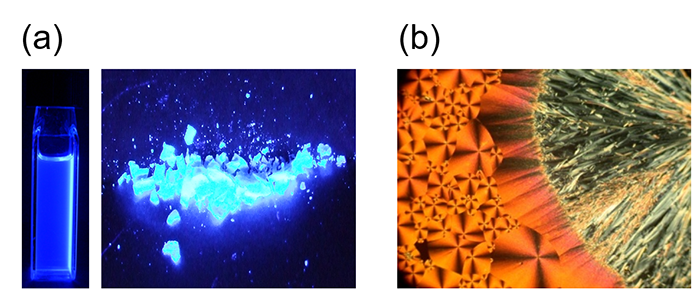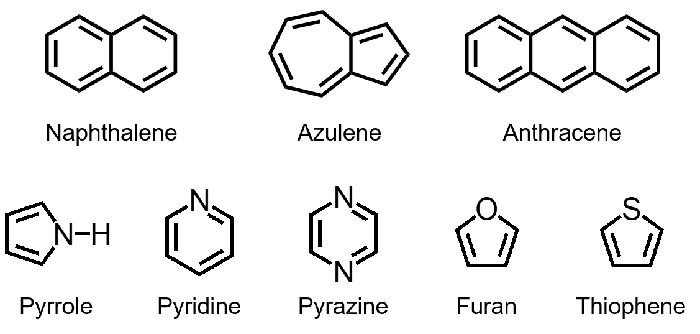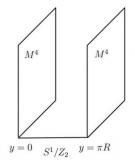Current Research Subject: Study on design, synthesis, and property evaluation of novel functional organic compounds
I specialize in organic chemistry, and especially research related to structural organic chemistry. I think that structural organic chemistry is the study that creates new organic compounds having a unique molecular structure that does not exist in nature or is difficult to synthesize, and clarifies their physical properties and functions of these compounds.
We are researching on the synthesis of novel functional organic π-electron compounds based on benzene (molecular formula: C6H6) as the research theme. Specifically, we are proceeding with the synthetic study of the compounds called "nanocarbon molecules" having a partial skeleton of carbon nanotube or graphene with a skeleton in which benzene is connected in tubular or sheet form (Scheme 1). In addition, although benzene itself does not exhibit characteristic physical properties or functions, but it shows unique physical properties and functions by connected directly or indirectly several benzene rings. In the process of synthetic study of nanocarbon molecules so far, we have been clarified that these precursors have unique physical properties and functions, such as luminescence behavior, and research is also carried out with the aim of the elucidation of the mechanism (Figure 1).

Scheme 1. Synthesis of carbon nanotube partial structure from benzene derivatives.

Figure 1. Examples of unique properties and functions of precursor compounds of nanocarbon molecules. (a) Highly efficient blue emission behavior in solution state and solid state. (b) Changes from one liquid crystal phase (gray color) to another liquid crystal phase (orange color).
Furthermore, we are also conducting research on the creation of novel functional organic π-electron compounds based on heterocyclic compound and non-benzenoid aromatic hydrocarbons, such as azulene (molecular formula: C10H8), and the elucidation of their properties and the development of functions (Figure 2).

Figure 2. Structure of aromatic hydrocarbons and heterocyclic compounds.
Organic π-electron compounds may be used as functional materials, such as semiconductor materials and luminescent materials, that constitute electronic and semiconductor devices that support our daily lives. Therefore, we believe that the organic compounds produced in our laboratory have the potential to become a new functional material that can transform the life base of the future.
Finally, let's create organic molecules with new physical properties and functions with us in Shinshu that is surrounded by beautiful nature.





